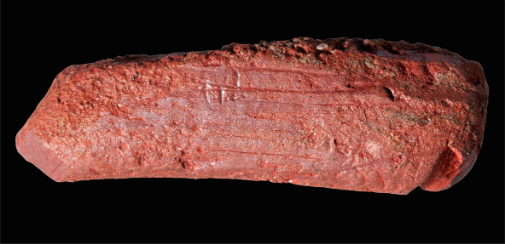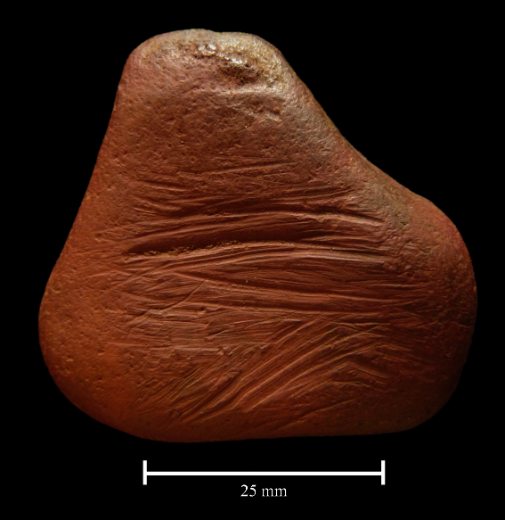10,000-year-old prehistoric crayon used by our artistic ancestors discovered in Stone Age lake
Archaeologists also found an ochre pebble at another archaeological site at the opposite end of the lake.



Archaeologists have discovered what they believe could be one of the earliest samples of a crayon, which was likely used by our ancestors around 10,000 years ago. The new discovery hints at the significance of colour in the lives of the ancient hunter-gatherers.
The prehistoric crayon, which is around 22mm long and 7mm wide, was found in an ancient lake in North Yorkshire, which is now covered in peat. Archaeologists also found an ochre pebble at another archaeological site at the opposite end of the lake. The ancient site dates back to the Mesolithic period, also known as the Stone Age.
"Colour was a very significant part of hunter-gatherer life and ochre gives you a very vibrant red colour. It is very important in the Mesolithic period and seems to be used in a number of ways. One of the latest objects we have found looks exactly like a crayon; the tip is faceted and has gone from a rounded end to a really sharpened end, suggesting it has been used," Dr Andy Needham from the University of York's department of archaeology, lead author of the new research, said in a statement. "For me it is a very significant object and helps us build a bigger picture of what life was like in the area; it suggests it would have been a very colourful place."
According to the researchers, the site where the ancient crayon was found, Flixton School House, was a primary location during the Stone Age. The recently discovered artefacts help shed some light on how early hunter-gatherers interacted with their surroundings.
"The pebble and crayon were located in an area already rich in art. It is possible there could have been an artistic use for these objects, perhaps for colouring animal skins or for use in decorative artwork," Dr Needham said.
The new study, which involved collaboration with the University of Manchester and the University of Chester, has been published in the Journal of Archaeological Science: Reports.






















